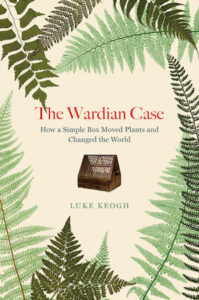 In 1829, the distribution of plantlife all around the planet changed as the result of a curious amateur naturalist and a moth pupa. Wanting to observe the transformation of the pupa, Nathaniel Bagshaw Ward placed it in a small glass vial with a little soil and some dried bits of leaves then sealed it. What Mr. Ward observed in the vial over the coming days, however, was the sprouting of a fan and some meadow grass. He had inadvertently discovered that plants contained in glass containers could not only survive but thrive. Four years later, following much experimentation, he had created the famous cases for transporting living plants across vast distances and that still carry his name today: Wardian cases.
In 1829, the distribution of plantlife all around the planet changed as the result of a curious amateur naturalist and a moth pupa. Wanting to observe the transformation of the pupa, Nathaniel Bagshaw Ward placed it in a small glass vial with a little soil and some dried bits of leaves then sealed it. What Mr. Ward observed in the vial over the coming days, however, was the sprouting of a fan and some meadow grass. He had inadvertently discovered that plants contained in glass containers could not only survive but thrive. Four years later, following much experimentation, he had created the famous cases for transporting living plants across vast distances and that still carry his name today: Wardian cases.
In the newly published The Wardian Case; How a Simple Box Moved Plants and Changed the World, from University of Chicago Press in Dr. Luke Keogh, senior curator at the National Wool Museum in Geelong, Australia, presents the remarkable story of this chance discovery and its world-changing effects.
If you are already familiar with Wardian cases, you’ll be delighted with this opportunity to learn the fascinating history of their discovery and development. And if you’re unfamiliar with them, this book will introduce you to one of the most on-the-surface mundane but in reality most world-changing technological innovations of the nineteenth century.
If you enjoyed reading this, please consider signing up for The Well-read Naturalist's newsletter. You'll receive a helpful list of recently published reviews, short essays, and notes about books in your e-mail inbox once each fortnight.
